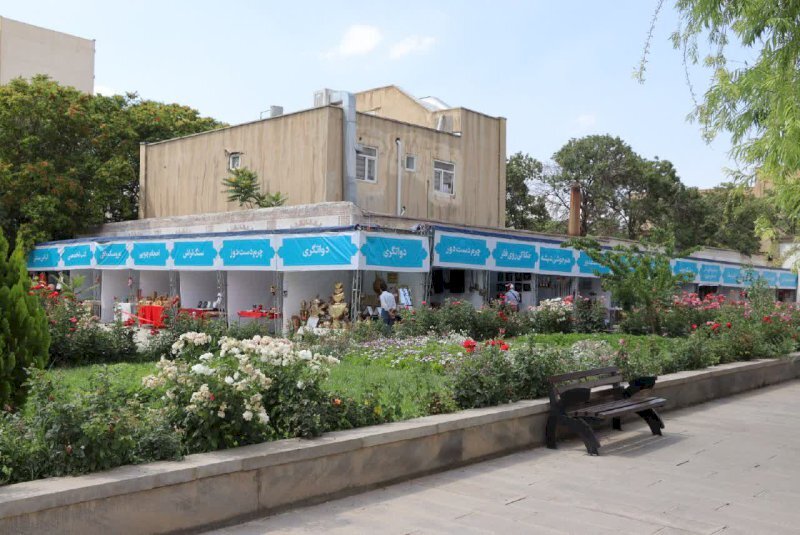Tabriz museum hosting handicrafts exhibit

TEHRAN – An exhibition of Iranian handicrafts and traditional arts is currently underway at Qajar Museum in Tabriz, the capital of East Azarbaijan province, the provincial tourism chief has said.
Organizing handicraft exhibitions in the vicinity of historical monuments enables tourists to discover cultural heritage sites while also learning about local hand-made products, Ahmad Hamzehzadeh explained on Monday.
The exhibit, which aims at promoting locally-made handicrafts, will run for two weeks, the official added.
Home to hospitable people, Tabriz is a perfect introduction to Iran for sightseers crossing over the border from Armenia, or through the Gurbulak Bazargan border from Turkey.
Like many cities in Iran, Tabriz has a long and rich history but saw many of its historic buildings destroyed by invaders or earthquakes. Tabriz became the capital of the Mongol Il-Khan Mahmud Gazan (1295–1304) and his successor. Timur (Tamerlane), a Turkic conqueror, took it in 1392. Some decades later, the Kara Koyunlu Turkmen made it their capital. It was when the famous Blue Mosque was built in the ancient city.
The city retained its administrative status under the Safavid dynasty until 1548 when Shah Tahmasp I relocated his capital westward to Qazvin. During the next two centuries, Tabriz changed hands several times between Persia and the Ottoman Empire. During World War I, the city was temporarily occupied by Turkish and then Soviet troops.
Downtown Tabriz is very walkable, and the people are also extremely friendly, something not particularly common in big cities.
According to available data, the value of Iran’s handicrafts exports stood at $400 million during the first ten months of the year 1401, which shows some 30 percent growth compared with the same period a year earlier.
Experts say Iranian handicrafts have a high capacity for export, which can be realized through the creation of special holding companies. The Islamic Republic exported some $320 million worth of handicrafts in the year 1400.
Iraq, Afghanistan, Germany, the United States, and the coastal states of the Persian Gulf are among the countries that traditionally import ceramics, porcelain, hand-woven clothing, personal jewelry, and semi-precious stones from Iran.
According to the Ministry of Cultural Heritage, Tourism and Handicrafts, Iran has the most cities and towns registered with the World Crafts Council (WCC), followed by China with seven, Chile with four, and India with three designated ones.
ABU/AM
